#Mount Garibaldi
Explore tagged Tumblr posts
Text
One of the signature peaks in the Sea to Sky corridor could soon have a not-so-new name.
The Squamish Nation is asking for Mount Garibaldi be officially recognized by its historic Sḵwx̱wú7mesh sníchim name "Nch'ḵay̓" (in-ch-KAY), which has been used for thousands of years.
Nch'ḵay̓ means "dirty place" or "grimy one" and stems from volcanic debris in the Cheekye River that tends to make it look muddy, according to the Squamish Nation.
Full article
Tagging: @politicsofcanada
#cdnpoli#canada#canadian politics#canadian news#canadian#Nch'ḵay̓#Squamish Nation#british columbia#BC#mount garibaldi
356 notes
·
View notes
Text
Utah and Arizona hiking road trip cancelled, we're visiting every Cascade volcanic location we can get to within discomfort limits.*
*I do not really want to backpack to Glacier Peak. I do not enjoy that sort of life.
#we are starting with Mount Garibaldi and we aren't stopping until Lassen Peak#chatters from the nightsky
1 note
·
View note
Text

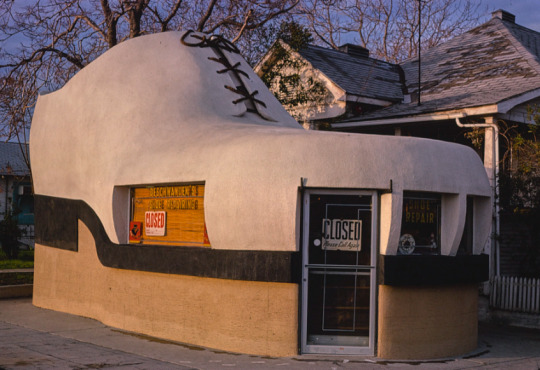
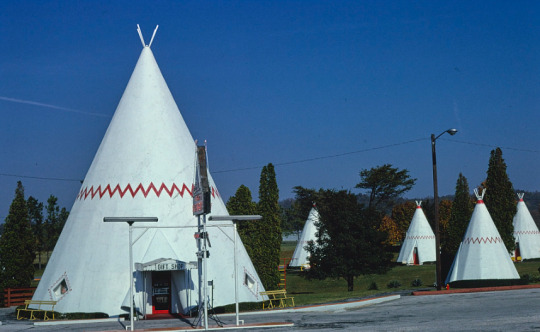

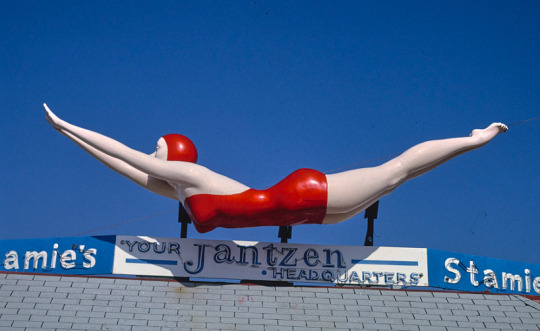
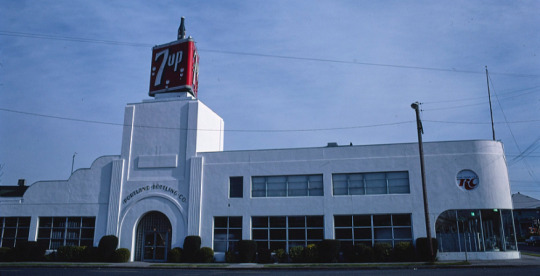
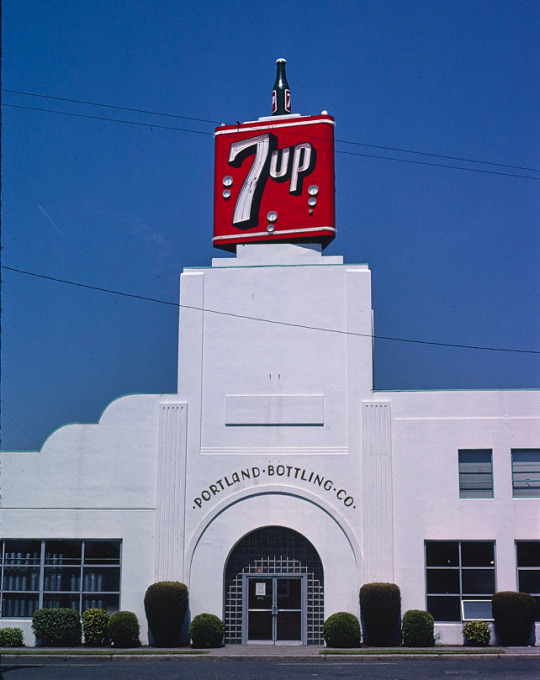


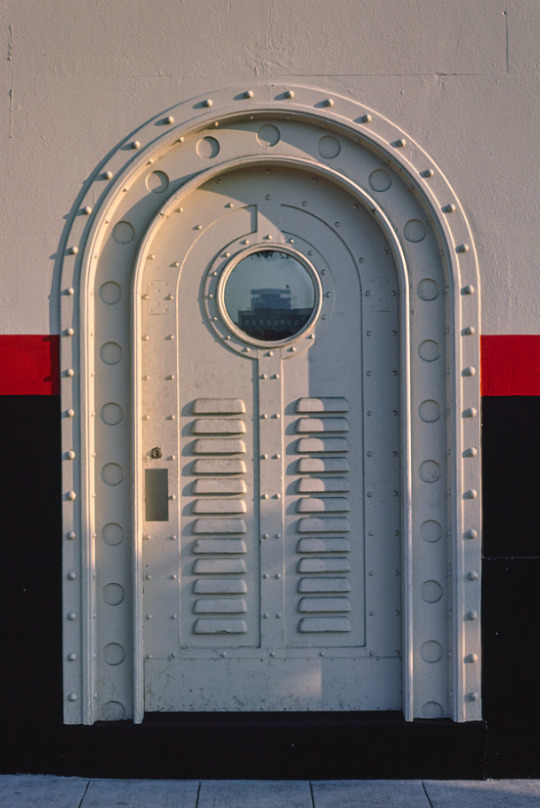
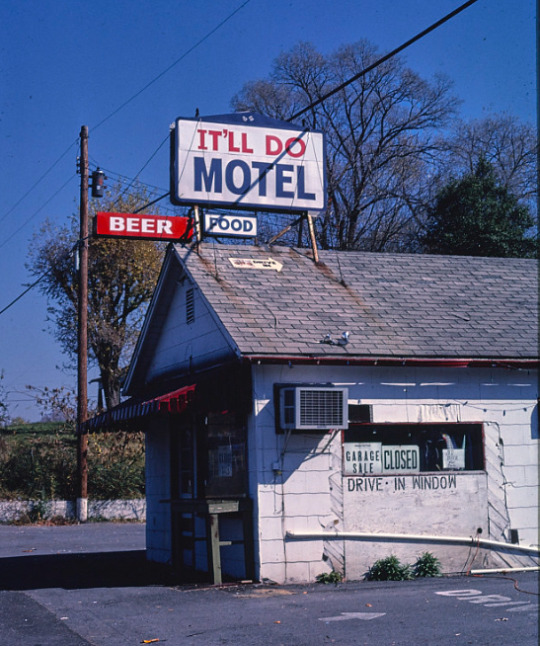

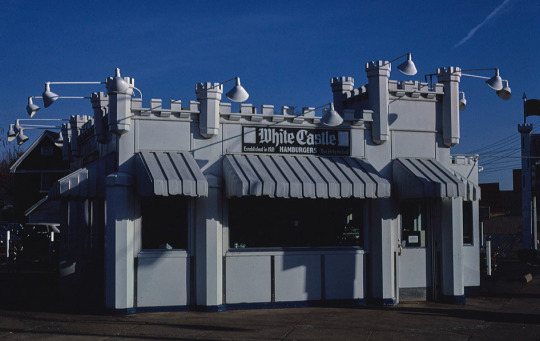

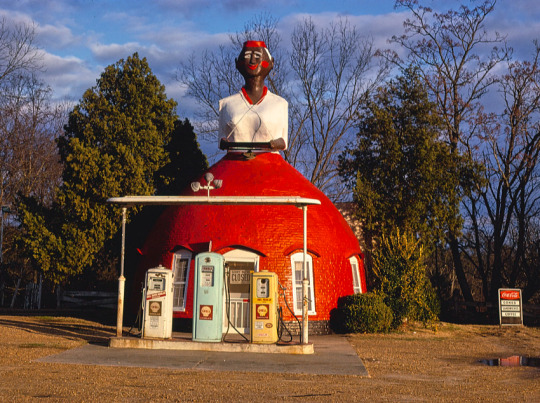
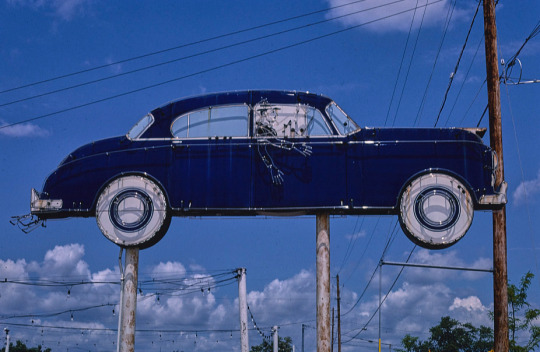


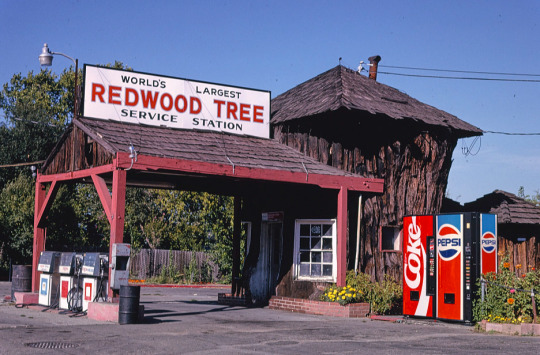



John Margolies (American, 1940-2016)
John Samuel Margolies was an architectural critic, photographer, and author who was noted for celebrating vernacular and novelty architecture in the United States, particularly those designed as roadside attractions. For almost forty years, he documented the most remarkable examples he found, publishing some of his discoveries in books and consigning the rest to an archive, which has now been purchased by the Library of Congress who, in a wonderfully gracious move, have lifted all copyright restrictions on the photographs. (see link below)
Gatorland Zoo alligator statue - Route 1, St. Augustine, Florida - 1979
Deschwanden's Shoe Repair (The Big Shoe) - 10th & Chester, Bakersfield, California - 1977
Wigwam Village #2 - office teepee and several teepee cabins - Route 31W, Cave City, Kentucky - 1979
Wigwam Village #6 - Route 66, Holbrook, Arizona - 1979
Jantzen sign - Stamie's Beachwear - Ocean Avenue, Daytona Beach, Florida - 1990
7-Up Bottling Company (two views) - NE 14 & Sandy Boulevard, Portland, Oregon - 1980
Coca Cola Bottling Company (two views) - 14th & Central Avenue, Los Angeles, California - 1977
Coca Cola Bottling Company (detail view of door) - 14th & Central Avenue, Los Angeles, California - 1977
It'll Do Motel (office) - Jonesborough, Tennessee - 1987
Joy Theater marquee - San Antonio, Texas - 1982
White Castle - Reading Road, Cincinnati, Ohio - 1980
Mammy's Cupboard (two views) - Route 61, Natchez, Mississippi - 1979
Dependable Used Cars sign - Division Street, Grand Rapids, Michigan - 1982
Stan The Tire Man statue - Broadway, Mount Vernon, Illinois - 1988
Bomber gas station - Route 99 E., Milwaukie, Oregon - 1980
World's Largest Redwood Tree Service Station (1936) - Route 101, Ukiah, California - 1991
Peach water tower - Frontage Road, Gaffney, South Carolina - 1988
Christie's Restaurant sign (cowboy shrimp) - Houston, Texas - 1983
Roadside flamingo statue - Frog City, Route 41, Florida - 1980
www.publicdomainreview.org/collection/john-margolies-photographs-of-roadside-america/
addendum: seen (not photographed) in a 2007 trip to Garibaldi/Nehalem/Manzanita Oregon — The Wheeler Inn with a wheelbarrow on the roof with a clothed female mannequin loaded into it . . .
31 notes
·
View notes
Text

The Mount Alexander Mail, 18 July 1870
The greater part of the year Victor Hugo stays at Guernsey, allowing himself a brief holiday in the autumn, when he visits Belgium, Switzerland, &c. Regardless of the amnesty, however, his conscience will not permit him to return to his beloved France. "When liberty returns, I will return." Nevertheless he is one of the leading and active members; if not the head, of the revolutionary party in that country. At all seasons, he is up at daylight, and, notwithstanding the accusation of a species of hydrophobia as regards baths, with which we English are wont to taunt our Gallic neighbours, Victor Hugo is a grand exception and example, for "tubbing" is with him an institution; and, long before his neighbours are stirring, Victor Hugo has performed his ablutions by the light of the earliest dawn. From his glass cabinet de travail he can see the sun rise at all seasons of the year. In midsummer, from here the sun appears to rise behind Cape La Hogue; at the equinox, from behind the cliffs of Sark; in the depth of winter from behind Jersey; from, which last island he was shamefully driven out by the unprincipled application of an old Star Chamber law, in 1855. The earlier part of the morning the poet is generally to be seen promenading on the balustraded roof of his house; drinking in long draughts of health from the sea breezes, and inspiration from the immensity of sea and skies around about him. With a red Garibaldi shirt, sometimes concealed under a blue-grey dressing gown, he restlessly marches up and down, apparently in deep thought, every now and then entering his aerial studio to write down his thoughts in those heart stirring words so dear to French readers; at other times he will tear up perhaps some lines not sufficiently forcible or polished, and the pieces of paper, like sibyline leaves, come fluttering into the garden, where my little children run to catch then, calling them butterflies; scraps which many would value as rare autographs. Intensely fond of children, M. Victor Hugo always takes the greatest interest in my little ones at play, one of whom is the same age as his little grandson away at Brussels; and when he sees them playing in the sun without their hats, will always call out to them to put their hats on. It is indeed most remarkable that this energetic, vigorous, and thoughtful poet, of the most powerful intellect in the nineteenth century, is not above composing for them the kindliest and most pathetic nursery and fireside poetry, amongst which we find some of his most graceful masterpieces. Every Monday a large number of poor children — in fact, the poorest which Madame Cheney can find — are provided with a hearty meal. No distinction of creed is thought of in the selection of these children; poverty is the only passport required. Besides this, the children carry off all the remains and scraps to take home with them. Food and fuel are never refused to any one who really cannot afford such necessities of life: whilst similar to Mons. Bienvenu (his beau ideal of what a bishop might and ought to be in "Les Miserables"), although several times things have been stolen and robberies committed at Hauteville House, the benevolent owner never will prosecute, or even attempt to have the depredators sought after. —Gentleman's Magazine.
7 notes
·
View notes
Text
LA VARA DI MESSINA - PRIMA PARTE: LA DANZA DELLE VARETTE - Pitrè, l’etnologo che studiò la cultura siciliana nei suoi vari aspetti, fu uno dei primi ad identificare le Feste Religiose come uno degli elementi più importanti dell’identità culturale siciliana. Nel suo libro “Feste Religiose in Sicilia”, Pitrè racconta in dettaglio la storia e i particolari della Vara di Messina ma, da quando il libro usci ad oggi, molte cose nelle tante feste siciliane sono cambiate. La Vara è una parola siciliana che letteralmente vuol dire “bara” in quanto molte delle feste religiose nascevano ai tempi degli spagnoli per celebrare il Cristo morto chiuso in una bara di vetro. Vi sono infatti molte similitudini tra alcune feste siciliane e le processioni di Valenza, Malaga, Siviglia ed altre città della Spagna dove si ricordano il Cristo morto e la sua Passione. La parola Vara, divenne presto il sinonimo di tutti quelle strutture utilizzate nelle processioni religiose per portare reliquie, oggetti sacri o su cui effettuare rappresentazioni sacre. La Vara di Messina è una struttura piramidale che descrive l’assunzione al cielo di Maria la cui statua è posta nel punto più alto della struttura stessa. Sotto di essa i sette cieli popolati da figure di cherubini e serafini in movimento. Il carro su cui la Vara è montata non ha ruote ed è tirato a mano per circa due chilometri e mezzo da una folla di devoti di ogni sesso, età e stato sociale. A causa del peso la Vara è tirata a mano grazie a due gomene lunghe centocinquanta metri. Molta terminologia usata nella vara è mutuata dalla storia marinara di Messina, per cui, oltre le gomene, vi sono i Timonieri, il Capotimoniere e i vogatori, tutti deputati al movimento coordinato della Vara e alla sua virata di circa ottanta gradi, da via Garibaldi al piazza Duomo, virata che rappresenta la parte più difficile e pericolosa del suo cammino. Nel suo andare da piazza Castronuovo a piazza Duomo, la Vara è preceduta dalle Varette, portate a spalla dai “devoti” che le muovono o facendole danzare o in modo rigido e formale. Nel filmato il primo tamburino richiama i devoti delle Varette e quindi dà il via alla loro processione.
THE VARA OF MESSINA - PART ONE: THE DANCE OF THE VARETTE - Pitrè, the ethnologist who studied Sicilian culture in its various aspects, was one of the first to identify Religious Festivals as one of the most important elements of Sicilian cultural identity. In his book “Religious Festivals in Sicily”, Pitrè tells in detail the history and particulars of the Vara of Messina but, since the book was published until today, many things in the many Sicilian festivals have changed. The Vara is a Sicilian word that literally means “coffin” as many of the religious festivals were born in the time of the Spanish to celebrate the dead Christ closed in a glass coffin. There are in fact many similarities between some Sicilian festivals and the processions of Valencia, Malaga, Seville and other cities in Spain where the dead Christ and his Passion are remembered. The word Vara soon became synonymous with all those structures used in religious processions to carry relics, sacred objects or on which to perform sacred representations. The Vara of Messina is a pyramidal structure that depicts the Assumption of Mary into Heaven, whose statue is placed at the highest point of the structure itself. Below it are the seven heavens populated by figures of cherubs and seraphim in motion. The cart on which the Vara is mounted has no wheels and is pulled by hand for about two and a half kilometers by a crowd of devotees of all sexes, ages and social classes. Because of its weight, the Vara is pulled by hand thanks to two one hundred and fifty meter long ropes. Much of the terminology used in the Vara is borrowed from the maritime history of Messina, so, in addition to the ropes, there are the Helmsmen, the Chief Helmsman and the rowers, all responsible for the coordinated movement of the Vara and its turn of about eighty degrees, from Via Garibaldi to Piazza Duomo, a turn that represents the most difficult and dangerous part of its journey. In its journey from Piazza Castronuovo to Piazza Duomo, the Vara is preceded by the Varette, carried on the shoulders of the “devotees” who move them either by making them dance or in a rigid and formal way. In the film, the first drummer calls the devotees of the varette and then starts their procession.
10 notes
·
View notes
Text










20th century Sheffield bowie knives
A BOWIE KNIFE, WILKINSON, LONDON, EARLY 20TH CENTURY with robust blade formed with a clipped-back point, etched with the maker’s details, Royal warrants to the King and Prince of Wales, and ‘Finest sword steel England’, German silver guard, natural staghorn scales retained by five rivets, in its scabbard,14.8 cm blade
A BOWIE KNIFE, T. ELLIN & CO., SHEFFIELD, 20TH CENTURY with straight blade formed with a clipped-back point and filed back-edge, etched ‘I Never Fail’ in large capital letters on one face, signed recessed rectangular ricasso, shaped steel guard, and blackbuck grip with steel pommel, in its leather scabbard with iron locket and belt loop, 25.0 cm blade
A LARGE BOWIE KNIFE, ROBINSON, SHEFFIELD, AND ANOTHER, SHEFFIELD WORKS PHILADELPHIA, SECOND HALF OF THE 20TH CENTURY the first with robust blade formed with a clipped-back point, signed recessed ricasso, iron guard, natural staghorn grip and turned iron pommel; the second with broad blade with clipped-back point, signed ricasso, brass hilt and horn grip studded with brass nails, the first: 25.0 cm blade (2)
A BOWIE KNIFE, GEORGE WOSTENHOLM & SON, WASHINGTON WORKS, SHEFFIELD, 20TH CENTURY with broad blade formed with a clipped-back point, stamped with the maker’s details, ‘I.XL’, and ‘The real I.XL knife’, engraved with an eagle and etched with two captioned portraits (worn), recessed rectangular ricasso stamped ‘I.XL’, German silver guard, milled copper alloy fillets, polished horn scales and vacant German silver escutcheon, 24.3 cm blade
A BOWIE KNIFE, JOSEPH RODGERS & SONS, NO. 6 NORFOLK STREET, SHEFFIELD, EARLY 20TH CENTURY with tapering blade formed with a clipped-back point, rectangular ricasso stamped with the maker’s details including cross and star mark and the Royal letters ‘ER’ divided by a crown, German silver guard with globular terminals, natural staghorn scales, vacant German silver escutcheon in its German silver-mounted leather scabbard with belt loop, 20.2 cm blade
A BOWIE KNIFE, GEORGE WOSTENHOLM & SON, WASHINGTON WORKS, SHEFFIELD, CIRCA 1960 with broad blade formed with a clipped-back point, stamped with the maker’s details, ‘I.XL’, ‘The Hunter’s Companion’, and ‘The real I.XL knife’, engraved with an eagle and with the makers name and ‘California Knife’ in gilt letters, recessed rectangular ricasso stamped with the maker’s details in full, German silver guard, milled copper alloy fillets, natural staghorn scales and vacant German silver escutcheon, in its wooden scabbard with tooled leather covering stamped ‘I.XL’ in gilt letters and with German silver mounts, 24.0 cm blade
A BOWIE KNIFE, GEORGE WOSTENHOLM & SON, WASHINGTON WORKS, SHEFFIELD, 20TH CENTURY with broad blade formed with a clipped-back point, stamped with the maker’s details, ‘I.XL’, and ‘The real I.XL knife’, engraved with an eagle and etched and gilt with two captioned portraits of General Garibaldi and Vittore Emanuel (worn), recessed rectangular ricasso stamped with the maker’s details in full, German silver guard, milled copper alloy fillets, natural staghorn scales and vacant German silver escutcheon, in its wooden scabbard with tooled leather covering stamped ‘I.XL’ in gilt letters and with German silver mounts, 24.3 cm blade
A CASED BOWIE KNIFE, SECOND HALF OF THE 20TH CENTURY with broad blade formed with a clipped-back point, stamped ‘Broomhead & Thomas Celebrated American Hunting Knife’ at the ricasso, German silver hit, mother-of-pearl scales, in its engraved German silver scabbard decorated with flowers, foliage and the initials ‘JB’, in a lined and fitted case, 23.8 cm blade
A BOWIE KNIFE, 20TH CENTURY with broad blade formed with a clipped-back point and stamped ’Fenton & Shore’ at the ricasso, cast copper alloy hilt comprising guard with scrolling quillons and horsehead pommel, horn grip, in its scabbard, 35.0 cm blade
A BOWIE KNIFE FOR THE AMERICAN MARKET IN MID-19TH CENTURY STYLE, 20TH CENTURY, INSCRIBED TILLOTSON, COLUMBIA PLACE, SHEFFIELD with single-edged blade with clipped-back point, etched with scrolling foliage and a scroll inscribed ‘Gold Hunter’s Knife’, rectangular ricasso stamped with the maker’s details, German silver guard and pommel, the latter embossed with a reclining lion, and mother-of-pearl scales retained by four rivets, 27.0 cm blade
tinyurl.com/yr4hd4pr
44 notes
·
View notes
Text
The Cascade Range in western North America are a remarkably quiet volcanic chain. Even though potentially active volcanoes stretch from Lassen Peak in the south to Garibaldi in the north, the only volcano to erupt in the past century is Mount St. Helens (twice). That's it. Compare that to places like Japan, Kamchatka, Indonesia and other volcanic arcs where it isn't uncommon for multiple volcanoes to be popping off simultaneously, the Cascades feel downright silent.
This is why the volcanological community get excited when something, anything, happens. The something that has everyone's attention right now is the return of the "bulge" on the west side of South Sister, part of the Three Sisters volcanoes west of Bend in Oregon.
Now, all this doesn't mean the USGS Cascades Volcano Observatory thinks anything will happen soon ... or at all. They have not changed the alert status from "Green", the lowest level. Even if this is magma moving, we have little clue to whether it is enough to cause an eruption ... or if any eruption could happen in the next few years or next few centuries.
4 notes
·
View notes
Photo

The Milky way over Mount Garibaldi, BC [OC] [4000x2667] https://ift.tt/LZC9U16
4 notes
·
View notes
Text
What to Expect on Your Squamish Gondola Adventure: Tips for First-Time Visitors
Located just an hour north of Vancouver, the Squamish Gondola offers one of the most breathtaking experiences in British Columbia. The gondola ride takes you high above the Howe Sound and lush coastal forests, providing panoramic views of the surrounding mountains, fjords, and rivers. Whether you’re an adventure enthusiast or a nature lover, the Squamish Gondola promises an unforgettable experience.
For first-time visitors, here's what you need to know to make the most of your Squamish Gondola adventure, along with helpful tips to ensure your day is perfect.

1. Start with the Sea to Sky Gondola Experience
The Squamish Gondola, also known as the Sea to Sky Gondola, is one of the key highlights of the area. The gondola ride starts from the base of the Stawamus Chief, a massive granite monolith that’s popular with rock climbers. In just 10 minutes, you’ll ascend 885 meters (2,900 feet) to the summit, where you’ll be greeted with jaw-dropping views of the Howe Sound fjord, the coastal forest, and towering peaks like Mount Garibaldi.
Each gondola cabin can comfortably seat eight people, and the large windows allow for unobstructed views. The ride is smooth and quiet, making it perfect for taking photos and soaking in the scenery. This experience is suitable for all ages and is an excellent introduction to the stunning landscapes of British Columbia.
2. What to Expect at the Summit
Once you reach the top, there’s so much more to do than just admire the views (though the views alone are worth the trip!). The summit offers a variety of activities for different interests and fitness levels.
Sky Pilot Suspension Bridge: One of the most iconic features at the top is the Sky Pilot Suspension Bridge, a 100-meter (328-foot) long bridge that stretches across a deep valley. Walking across the bridge is thrilling and provides even more spectacular vistas of the mountains and forests below.
Viewpoints: There are several well-marked viewing platforms offering different perspectives of the surrounding natural beauty. Popular spots include the Chief Overlook Viewing Platform, which offers a great view of the Stawamus Chief, and the Panorama Trail viewpoint, which provides an expansive look at the Howe Sound.
Trails for All Abilities: Whether you’re up for a leisurely walk or a more strenuous hike, the Squamish Gondola summit has trails for everyone. If you prefer a gentle stroll, take the Spirit Trail, a 400-meter loop that meanders through the alpine forest. For those who want more of a challenge, consider hiking the Sky Pilot Valley Trail, which offers a more immersive experience in the mountain terrain.
3. Hiking and Adventure Opportunities
For outdoor enthusiasts, the Squamish Gondola is a gateway to several amazing hikes and backcountry experiences. The gondola gives access to numerous alpine hiking routes, offering varied levels of difficulty. Some popular hikes include:
Al's Habrich Ridge Trail: A more challenging hike with a steep incline and rocky sections, but the rewarding views make it worth the effort.
Shannon Basin Loop: This trail is longer but not as steep, making it a great option for those looking for a full-day adventure without too much intensity.
Be sure to bring the proper hiking gear, including sturdy shoes and plenty of water. If you’re visiting during the winter, many of the trails are open for snowshoeing, providing a unique way to experience the snowy alpine landscape.
4. Dining with a View
After a day of exploring the summit, you might want to relax and refuel at the Summit Lodge, which has a café offering a variety of snacks, meals, and beverages. The lodge's patio seating provides stunning views, making it the perfect spot to enjoy lunch or a coffee while taking in the beautiful scenery.
For a more substantial meal, the Summit Eatery offers delicious West Coast-inspired dishes, and the food pairs perfectly with the panoramic views visible from almost every seat.
5. When to Visit: Seasonal Tips
The Squamish Gondola operates year-round, and each season offers its own unique charm:
Summer: During the summer months, the weather is mild and perfect for hiking and exploring the various viewpoints. The lush greenery and blooming wildflowers make for stunning photographs.
Winter: In the winter, the gondola transforms into a snowy wonderland. Snowshoeing and winter hiking become popular activities, and the summit often hosts festive events during the holiday season.
Spring and Fall: These shoulder seasons are quieter, with fewer crowds, making it an ideal time for a more peaceful experience. The fall foliage adds a beautiful touch of color to the landscapes, while spring brings the return of green forests and fresh mountain air.
6. Tips for First-Time Visitors
Arrive Early: The Squamish Gondola can get busy, especially during peak tourist seasons. Arriving early will allow you to avoid long lines and enjoy a more peaceful experience at the summit.
Dress in Layers: The weather at the base and the summit can vary significantly. Even in summer, it can be chilly at the top, so it’s a good idea to dress in layers and bring a light jacket.
Bring a Camera: The views are simply incredible, so don’t forget to bring a camera or smartphone to capture the memories.
Buy Tickets in Advance: To save time, consider purchasing your tickets online. This will allow you to skip the line and get straight to the gondola.
Conclusion
Whether you’re visiting for a day trip or planning a longer stay, the Squamish Gondola offers a unique and awe-inspiring experience that you won’t want to miss. From scenic views and thrilling adventures to peaceful hikes and delicious dining options, it’s an unforgettable way to explore the beauty of British Columbia.
For more information about visiting the Squamish Gondola, including special promotions during spring break, visit https://www.squamishreporter.com/2024/02/29/spring-break-fun-kids-and-youth-get-free-ride-at-sea-to-sky-gondola.
0 notes
Text
25 Awesome Day Trips from Vancouver, Canada
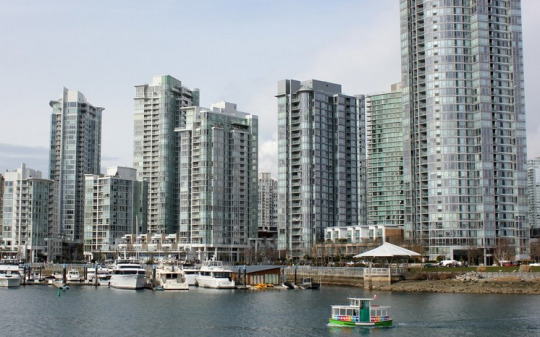
1. Whistler
We’re starting with a top pick: Whistler, a four-season resort town located 125 km north of Vancouver (about a 1.5-hour drive). Renowned for adventure, Whistler gained worldwide fame in 2010 as a Winter Olympics co-host and consistently ranks as the top ski resort in North America. In 2008, it introduced the world-record-breaking Peak 2 Peak Gondola.
Whistler has evolved into a top summer destination, offering over 50 km of high alpine hiking trails, golf courses, zip-line courses, ATV off-road tours, bungee jumping, helicopter tours, bear viewing tours, white water rafting, and several freshwater lakes for SUP, kayaking, and canoeing. The Whistler Bike Park is among North America’s best. Annual events include the World Ski & Snowboard Festival in April and Crankworx Mountain Bike Festival in August.
Things to Do in Whistler:
Ride the Whistler Peak 2 Peak Gondola.
Try the Whistler Sasquatch Zipline, the longest in Canada and the US.
Relax at the traditional Scandinave Spa.
Golf at courses like the impressive Nicklaus North Golf Course.
SUP or kayak at Lost Lake, Alta Lake, or Green Lake.
Enjoy downhill mountain biking or cross-country trail riding.
Explore with zip-line courses, ATV off-road tours, white water rafting, or bungee jumping.
Take a Jeep tour to see glaciers and mountain vistas.
Opt for a helicopter or float plane sightseeing tour.
Join a bear viewing tour or nature safari.
Hike to stunning alpine lakes like Garibaldi Lake, Joffre Lakes Provincial Park, Cheakamus Lake, Elfin Lakes, or Wedgemount Lake.
Visit the unique Whistler train wreck.
2. Victoria
Located on the southern tip of Vancouver Island, Victoria is one of the oldest cities in the Pacific Northwest and the capital of British Columbia. It’s approximately 100 km from both Vancouver and Seattle, making it perfect for a day trip or weekend getaway.
Most visitors take the ferry from Tsawwassen BC Ferries Terminal, but a bus from downtown Vancouver to downtown Victoria (including the ferry crossing) is an option. For a quick visit, a float plane from downtown Vancouver is the fastest and most convenient.
Where to Stay in Victoria:
Magnolia Hotel, Victoria Ocean Pointe Resort, and Fairmont Empress are centrally located and family-friendly.
3. Bowen Island
Bowen Island, approximately 25 km northwest of Vancouver, offers a laid-back vibe away from the city hustle. The island, 6 km wide and 12 km long, is perfect for a day of kayaking, mountain biking, hiking, and boating.
Popular Activities:
Hike the 9 km Killarney Lake trail or the challenging 17 km Mount Gardner summit.
Visit Snug Cove, with its marina, shops, and restaurants.
Relax at beaches like Tunstall Bay, Bowen Bay, and Sandy Beach.
4. Sunshine Coast
Stretching from Langdale to Lund, the Sunshine Coast offers beautiful coastal scenery and quaint communities. Most visitors take a ferry from Horseshoe Bay, though a float plane is an option. Focus on Langdale and Hopkins Landing for a day trip.
Things to Do:
Explore Hopkins Landing, a great spot for kayaking, swimming, and beachcombing.
5. Howe Sound Boat Cruise
Howe Sound, a network of fjords between West Vancouver and the Sunshine Coast, offers stunning scenery. Rent a boat from Sewell’s Marina in Horseshoe Bay to explore.
Highlights:
Visit Pam Rocks to see lazy seals.
Explore marine parks and secluded coves at Gambier or Anvil Island.
6. Horseshoe Bay
Horseshoe Bay, the gateway to Howe Sound and the Sunshine Coast, is located on the western tip of West Vancouver. It’s a fun place to have lunch and spend the afternoon, with restaurants, a rocky beach, and a playground.
7. Squamish
Halfway between Vancouver and Whistler, Squamish is an outdoor adventure destination. Highlights include rock climbing at Stawamus Chief, windsurfing and kite surfing at the Squamish Spit, hiking trails, and the West Coast Rail Heritage Park.
8. Sea to Sky Gondola
In Squamish, the Sea to Sky Gondola offers a 10-minute ride up the mountain, with activities at the summit including the Sky Pilot Suspension Bridge, viewing platforms, and hiking trails.
9. Britannia Mine Museum
Located in Britannia Beach, the Britannia Mine Museum offers an underground tour on an old mine train, showcasing what life was like for miners in the early 1900s.
10. Porteau Cove Provincial Park
Porteau Cove, a small park on Howe Sound, features rocky beaches, mountain vistas, and a pedestrian pier. It’s also a popular scuba diving spot.
11. Garibaldi Provincial Park
Located between Squamish and Whistler, Garibaldi Provincial Park offers impressive hiking trails, including the popular Garibaldi Lake trail.
12. Whale Watching in the Southern Gulf Islands
The Southern Gulf Islands are ideal for whale watching, especially during the salmon migration between May and October. Tours are available from Vancouver.
13. Capilano Suspension Bridge and Cliffwalk
In North Vancouver, the Capilano Suspension Bridge Park offers the famous suspension bridge, the Cliffwalk experience, and the Treetops Adventure.
14. North Shore Mountains
Visit Grouse Mountain, Mount Seymour, and Cypress Mountain for skiing in the winter and hiking in the summer. Grouse Mountain offers the Skyride tram and the Grouse Grind hike.
15. Deep Cove
Deep Cove in North Vancouver offers kayaking, stand-up paddleboarding, and hiking. Popular activities include hiking to Quarry Rock and renting kayaks.
16. Steveston Fisherman’s Wharf
Steveston Village in Richmond is a charming fishing village with fish and chips, fresh seafood, and the Gulf of Georgia Cannery National Historic Site.
17. River Rock Casino
Located in Richmond, the River Rock Casino Resort is the largest casino in British Columbia, with entertainment acts and the nearby Richmond Night Market.
18. Langley Wine Tours
Langley is home to award-winning wineries like Chaberton Estate Winery, Township 7 Winery, and Backyard Vineyards. Wine tasting tours are available from Vancouver.
19. Cultus Lake Waterpark & Adventure Park
Located south of Chilliwack, Cultus Lake offers a waterpark, adventure park, and family-friendly attractions.
20. Chilliwack Lake Provincial Park
Chilliwack Lake Provincial Park offers hiking, beaches, boat launches, and recreational facilities. It’s located 150 km east of Vancouver.
Exploring the Vancouver area offers a wealth of diverse and exciting day trips, from adventure-filled destinations to relaxing coastal getaways.
0 notes
Text

















@arturstanisz
1-. This photo features the famous and well photographed Fitz Roy peak located in the Argentinean Patagonia
2-. Earth's Whisper - Patagonia
3-. Hypnotizing Paine Grande
4-. Iced Waves-Joffre Peaks in Bristish Columbia, Canada
5-. Liberating from Samsara
6-. Light Wizards - Patagonia
7-. Metamorphosis
8-. Unexpected Witness, Torres del Paine
9-. A view to remember - The Pacific Rain Forest of British Columbia is a fascinating place full of different natural wonders
10-. Awakening Paine Grande
11-. CerroTorre Runoff, Patagonia, Argentina. @arturstanisz
12-. Garibaldi Park and Black Tusk
13-. Last Light. This photo features famous Fitz Roy and Rio Blanco located in the Argentinean Patagonia
14-. Mount Thor, The Auyuittuq National Park on Baffin Island
15-. Summertime. Canadian Rockies
16-. The Plunge
1 note
·
View note
Photo

Mount Garibaldi - Canada (by Gord McKenna)
#Mount Garibaldi#Canada#Kanada#America#Nature#Landscape#Outdoor#View#Mountain#Photography#Travelling#Traveling#Travel#Tourism#Holiday#Urlaub#Reisen
941 notes
·
View notes
Photo

Hiking Mount Garibaldi
British Columbia, 1986
#vintage camping#mount garibaldi#british columbia#what a view#1980s#whistler#kodachrome#black tusk#vancouver#tantalus range#hiking
20 notes
·
View notes
Photo

mount garibaldi
#mount garibaldi#sea to sky#whistler#squamish#vancouver#fall#sunset#brandywine meadows#scenic#seasons#winter is coming
293 notes
·
View notes
Photo

forest dweller by vladdzavik1
2 notes
·
View notes
Photo

The first to touch light. Mount Garibaldi, British Columbia [4000x6000] via /r/EarthPorn https://ift.tt/2xW6ckg
2 notes
·
View notes